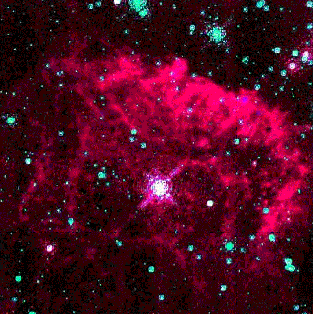What are Neutrinos?
They're nothing - almost nothing. Neutrinos can be any of three subatomic particles associated with particles in the lepton family. The three families or flavors of neutrinos include electron neutrinos, muon neutrinos, and the most recently discovered, tau neutrinos. Neutrinos have no electric charge, nor a measurable mass, and are predicted to travel near the speed of light.
Neutrinos are emitted from several sources:

A supernovae blast emits trillions and trillions of neutrinos
The neutrino has a remarkable property: it has left helicity (its spin is oriented in the direction opposite to its velocity). All ordinary neutrinos are left handed (i.e. if a neutrino travelled towards you, it would be spin like a left-handed corkscrew). These elusive, ghostly particles have made headlines for years because of their astounding properties. First, they were thought to have no mass (a theory now believed to be false as it was recently discovered that they oscillate); and second, because they rarely interact with matter. In fact, while reading this sentence, billions of neutrinos have passed through your body without any diversion!

The world's first neutrino detection, November 3, 1970. In a hydrogen bubble
chamber, the "invisible" neutrino and a proton collide (where all three tracks
originate)
Dreaming Of A Mirror Universe | What is Mirror Matter? | What are Neutrinos? | The Solar and Atmospheric Neutrino Anomalies | Nature's Four Forces | The Detection of Mirror Matter | How Will These Theories Affect our Lives? | Did You Know...? | Conclusion | Bibliography | Acknowledgements | Related Links